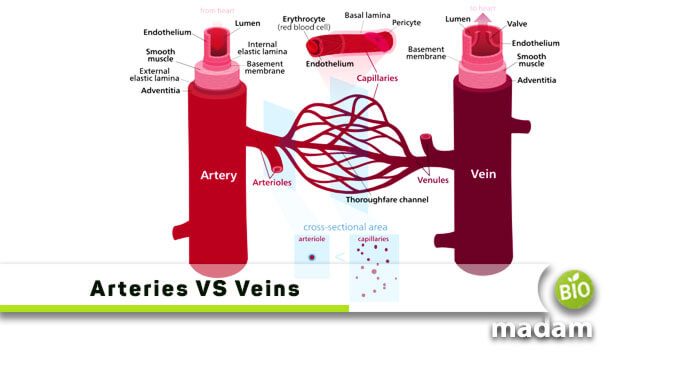The human body is so well-organized that multiple functions simultaneously go on inside it. Each is differentiated for smooth and coordinated functioning between organs, thus letting the entire body work. One of these is the transportation of blood to and from the heart, being the most critical part of survival.
Generally, two types of blood vessels called arteries and veins carry blood away and towards the heart, respectively. Although part of the circulatory system, these two are distinct in their functionality and particularity. So, today in this article, we will be looking at the apparent differences between the two. Let’s start with a quick comparison table.
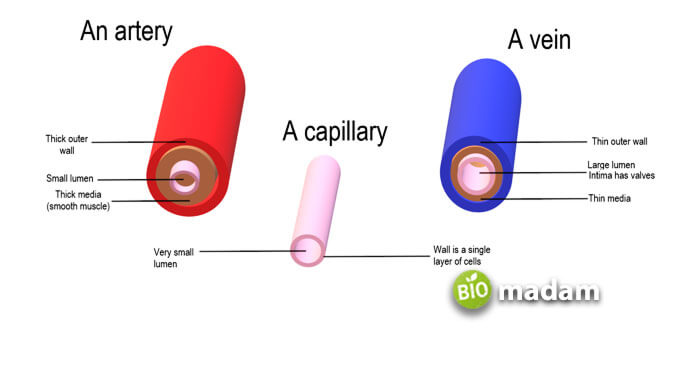
Comparison Table: Arteries VS Veins
| Characteristics | Arteries | Veins |
|---|---|---|
| Location | Deep inside the body | Closer to skin |
| Color | Red | Blue |
| Purpose | Carry Oxygenated Blood | Carry Deoxygenated Blood |
| CO2 Quantity | Low | High |
| Inside Blood Vol. | Almost 10% | Approx. 70% |
| Vessel Wall | Thick | Thin |
| Flexibility Ratio | High | Low |
| Valves | Absent | Present |
| Pressure Rate | High | Low |
| Blood Flow Direction | Downwards | Upwards |
What are Arteries?
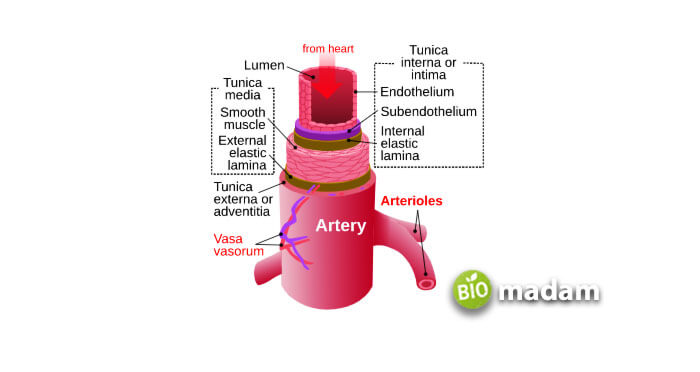
Arteries are naturally responsible for carrying oxygenated blood from the heart to all body parts. These vessels are branched into smaller vessels called arterioles that are further sub-branched into capillaries where the exchange of gases, nutrients, and waste materials occurs. The largest of all the arteries is the aorta, which is the first to receive oxygen-rich blood from the heart.
Classification of Arteries
These blood vessels are typically classified into three types depending upon their size and function.
- Elastic Arteries
- Muscular Arteries
- Arterioles
Elastic Arteries
The large vessels coming from the heart are elastic arteries. As per their name, elastic arteries are flexible in nature to continuously handle the blood flow coming from the heart. When the heart forcefully pushes the blood, elastic arteries expand to transport it throughout the body.
The major elastic arteries include the aorta and pulmonary artery. The aorta is the primary artery that carries blood away from the heart, while the pulmonary artery carries deoxygenated blood to the lungs.
Muscular Arteries
On the other hand, the muscular artery is medium-size and collects blood from the elastic artery. Coronary artery or femoral are included in this type, which expands and contracts based on the blood flow. Besides, the muscular artery comprises smooth muscle fibers that primarily help in expansion and contraction. The change in the size of the artery evaluates how much blood can be moved away from the heart.
Arterioles
Next comes the third type of artery, the arterioles. These minor arteries are allocated to distribute blood from larger arteries through capillaries. These are also made up of smooth muscle fibers, helping in contraction and expansion.
In addition, arteries are also classified based on their origin from the heart’s ventricle.
Pulmonary Arteries: The blood vessels coming from the right ventricle are pulmonary vessels that help transport blood to the lungs.
Systemic Arteries: On the contrary, systemic arteries originate from the left ventricle and take oxygenated blood to all tissues in all parts of the body.
What are Veins?

Veins are the second type of blood vessel carrying deoxygenated blood from the body to the heart. These translucent tube-like structures throughout the body collect blood from tissues to take it back to the heart. Veins hold approximately 70% of the blood all the time because of their thinness and fewer muscles. The largest veins are the superior vena cava and inferior vena cava. The former collects blood from the upper body to send it back to the heart. At the same time, the inferior vena cava takes blood from the lower body to the heart. Unlike arteries, veins function against the nature of gravity to reach the heart.
Classification of Veins
Veins are classified into four types depending upon their function and location.
- Deep Veins
- Superficial Veins
- Pulmonary Veins
- Systemic Veins
Deep Veins
These are located in muscle tissues, having a corresponding artery near them. This type of vein is unidirectional to prevent the backward flow of blood.
Superficial Veins
Such veins are closer to the skin’s surface and do not have any arteries near them. Superficial veins are also unidirectional to prevent the abnormal flow of blood.
Pulmonary Veins
The term pulmonary relates to the lungs. So, pulmonary veins are the veins that transport oxygenated blood from the lungs to the heart. Two pulmonary veins correspond to the right and left lungs.
Systemic Veins
The last type of vein, the systemic vein, is present throughout the body. It transports the deoxygenated blood from the legs up to the neck and from all tissues to the heart.
Differences between Arteries and Veins
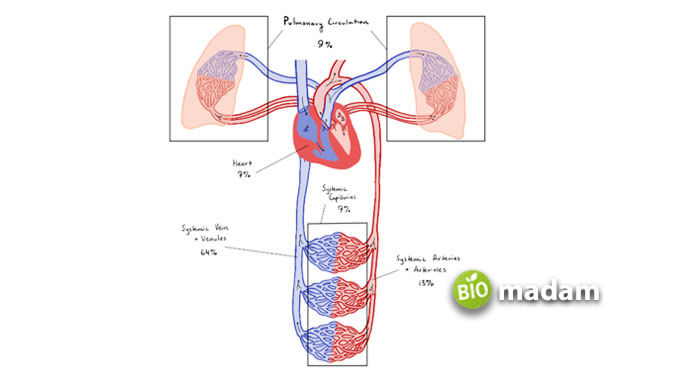
Primary Function
Arteries
These play an essential role in transporting oxygenated blood from the heart to all parts of the body, except the pulmonary artery.
Veins
In contrast, veins transport deoxygenated blood from all parts of the body, except pulmonary veins, to the heart.
Nature of Vessel Wall
Arteries
These vessels are naturally thick, rigid, and exclusively muscular to carry colossal blood.
Veins
Unlike arteries, these vessels are fragile and comparatively less muscular.
Physical Appearance
Arteries
Arteries are red in color due to the oxygenated blood inside.
Veins
On the other hand, veins are blue due to carrying deoxygenated blood.
The direction of Blood Transport
Arteries
Arteries function by carrying blood away from the heart.
Veins
On the contrary, veins function to carry blood towards the heart.
Oxygen Level
Arteries
The oxygen level in arteries is high due to receiving oxygenated blood.
Veins
In contrast, the oxygen level in veins is low due to receiving deoxygenated blood.
Location/Position
Arteries
These are present deep inside the body.
Veins
On the other side, veins are located near the skin and can be detected through different devices.
Thickest Layer
Arteries
The thickest of all layers is Tunica Media in arteries.
Veins
Similarly, the thickest of all layers is Tunica Adventitia in veins.
Pulse Detection
Arteries
We can easily detect pulse rate through arteries.
Veins
Veins play no role in pulse detection.
Presence of Valves
Arteries
Arteries function along with the force of gravity in the downward direction, so valves are absent.
Veins
On the contrary, veins perform their role against gravity, thus have valves to prevent the backflow of blood.
Diseases
Arteries
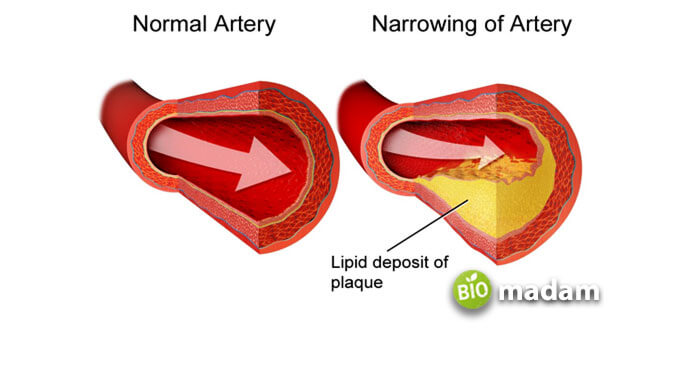
The abnormalities in arteries lead to severe diseases, for example, atherosclerosis, angina pectoris, and other cardiovascular diseases.
Veins
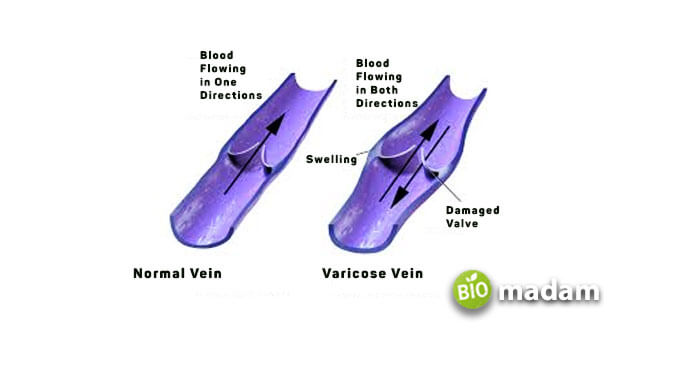
Unlike arteries, veins have a lesser probability of causing diseases, but they can cause significant deep vein thrombosis, varicose veins, etc.
Conclusion
So by the end of this article, we know that arteries and veins are the two significant elements of the circulatory system, despite being different. Other than arteries and veins, are the capillaries, that help in circulation. However, both arteries and veins function ensure the smooth transportation of blood throughout the body. Arteries are naturally thick to distribute blood to all parts of the body. On the contrary, veins are developed thin to carry blood back to the heart.

Anna has completed her degree in Pharmacy from the University of Hawaii. She is serving as a research assistant in a pharmaceutical company. She had a great interest in writing blogs, traveling to different parts of the US, and trying delicious recipes in her spare time.

